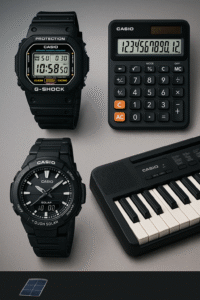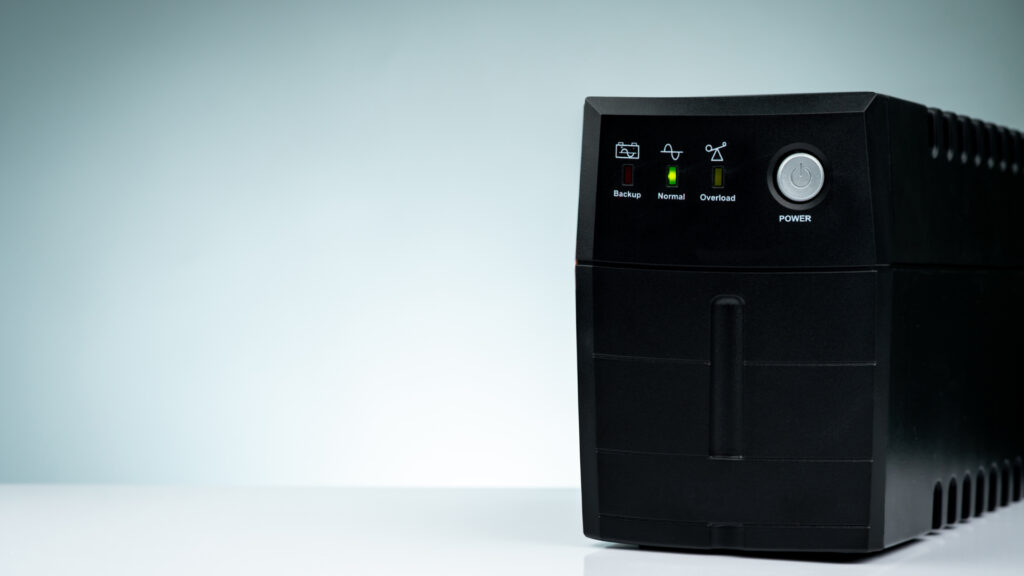Casio—a name that instantly transports you to memories of beeping calculators, indestructible G-Shock watches, and the first time you played “Für Elise” on a keyboard. But have you ever wondered how this Japanese giant went from crafting humble timepieces to pioneering calculators, cameras, and musical instruments? In this guide, we’ll take a deep dive into Casio’s journey, explore its standout products, and uncover why its innovations continue to shape our everyday lives. Ready? Let’s hit the power button and start this adventure!
History of Casio
Founding and Early Years
Casio’s story begins in 1946, right after World War II, when Tadao Kashio founded Kashio Seisakujo in Tokyo. Initially, they manufactured pipe fittings—hardly the tech empire we know today. The turning point came in 1957, when Casio released the first entirely mechanical calculator, the 14-A. Imagine lugging around a bulky machine to crunch numbers; it was revolutionary back then and set the stage for Casio’s calculator dynasty.
Expansion into Electronics
By the 1960s, Casio was hungry for more. They entered the electronic calculator market with flair, introducing models that were faster, smaller, and more affordable than competitors. Fast-forward to 1974, and Casio unleashed the world’s first all-electric compact calculator, the Casio Mini—pocket-sized wizardry that made calculations on the go a breeze. That success fueled further diversification, propelling Casio into watches, musical instruments, and cameras.
Casio’s Key Product Lines
Watches
Watches are perhaps what most of us first associate with Casio. From everyday timekeepers to rugged outdoor companions, Casio has covered every wrist need.
Digital Watches
Remember your first F‑91W, the classic digital watch with an alarm and stopwatch? Its minimalistic design and sub-$20 price tag made it a cult favorite. Casio’s digital line offers crisp LCD displays, multiple time zones, and countdown timers—all packed into a lightweight frame.
Analog and Analog-Digital Hybrids
If you crave a traditional look with modern features, Casio’s analog-digital hybrids blend the best of both worlds. These watches often feature tough solar power, tough movement technology (automatic hand correction), and world time—all while sporting classic hands on the dial.
Calculators
Before smartphones, Casio calculators were classroom heroes and office staples.
Basic Pocket Calculators
These are the entry-level workhorses—simple four-function devices that tackle addition, subtraction, multiplication, and division. With bold keys and a clear display, they’re perfect for quick math on the fly.
Scientific and Graphing Calculators
For engineers, students, and scientists, Casio’s scientific calculators handle trigonometric functions, statistical analysis, and more. Graphing models take it further by plotting functions, solving equations graphically, and supporting programming. They’re like mini-universities in your backpack.
Musical Instruments
Casio didn’t stop at math and time; they ventured into melody.
Digital Pianos
Casio’s digital pianos combine authentic piano touch with headphone outputs for quiet practice. Sound sampling technology replicates grand pianos so well, it feels like you’re on a concert stage.
Portable Keyboards
From beginner-friendly 61-key models to advanced synthesizers, Casio keyboards offer built-in rhythms, learning tools, and MIDI connectivity. They’re the Swiss Army knives of home music production.
Cameras and Imaging Devices
Though Casio exited the camera market in 2008, their Exilim line left a mark with ultra-thin bodies, rapid start-up times, and high-speed shooting modes. These pocket cameras were the precursor to today’s mirrorless and smartphone photography boom.
Technological Innovations
Casio’s secret sauce is continuous innovation—often before you even knew you needed it.
Durability and Water Resistance
Enter the G‑Shock, born in 1983. Engineer Kikuo Ibe shattered watch expectations with a prototype that survived a drop from 10 meters. Today, G‑Shocks are known for withstanding extreme conditions—water, shock, mud—you name it.
Solar-Powered and Eco Technologies
Casio’s Tough Solar technology uses ambient light to power watches, eliminating battery worries. Coupled with eco-friendly designs, these timepieces run for months on a single charge, even stored in the dark.
Casio in Pop Culture and Media
Iconic Appearances in Movies and TV
Casio watches have graced the wrists of action heroes and everyday characters alike. Think Daniel Craig’s G‑Shock in a James Bond film—classic meets cutting-edge.
Collaborations and Limited Editions
From Star Wars-themed watches to partnerships with streetwear brands, Casio loves teaming up to create buzzworthy limited runs. These collaborations often sell out within minutes, making them collector’s gold.
Maintenance and Care Tips
Even the toughest gadgets need a little TLC.
Cleaning and Storage
Wipe your watch or calculator with a soft, damp cloth. Avoid harsh chemicals. For storage, keep electronic instruments in a dry, temperature‑controlled case to protect sensitive components.
Battery Replacement and Servicing
When your calculator’s display fades or your watch’s battery dies, head to an authorized service center. They’ll swap batteries without voiding warranties and perform any needed calibrations.
Conclusion
Casio’s journey from post‑war pipe fittings to global tech icon demonstrates a relentless pursuit of innovation. Whether you’re timing a workout with a G‑Shock, solving complex equations on a graphing calculator, or composing a melody on a keyboard, Casio’s products embody reliability, affordability, and cutting‑edge technology. Next time you glance at your wrist or tap away on a calculator, remember—you’re part of Casio’s enduring legacy.
FAQs
1. What makes G‑Shock watches so durable?
G‑Shock watches feature a shock‑resistant structure with an internal cushioning system and protective outer shell, allowing them to absorb impacts and remain functional under extreme conditions.
2. Are Casio calculators still relevant in the smartphone era?
Absolutely! Casio calculators offer tactile feedback, dedicated function keys, and no distractions—features that make them indispensable for exams and professional tasks.
3. How often should I service my Casio watch?
For solar‑powered models, service every 3–5 years to check seals and replace batteries if needed. Traditional battery watches may need servicing every 2–3 years.
4. Can I connect my Casio keyboard to a computer?
Yes, most modern Casio keyboards support USB‑MIDI connectivity, allowing you to interface with digital audio workstations and music software.
5. Where can I find authentic limited‑edition Casio collaborations?
Official Casio retailers, brand websites, and authorized dealers often stock limited editions. Follow Casio’s official social channels for launch announcements.


